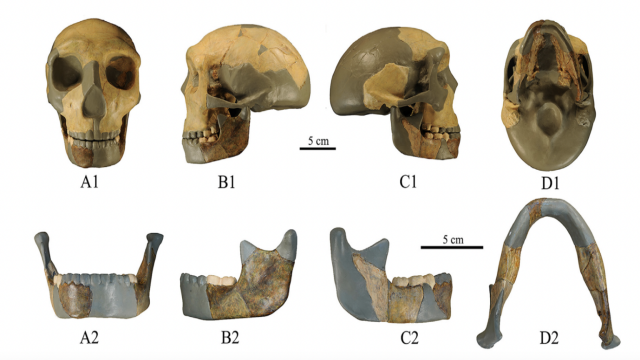What is HLD 6?
In the realm of scientific discovery, there are moments that redefine our understanding of the past and illuminate the intricate tapestry of human evolution. Such a moment has emerged with the revelation of fossilized hominid remains known as HLD 6. This remarkable find has set the stage for new insights into our ancestral history, intriguing researchers and sparking discussions worldwide.
Puzzling Physical Traits and Associations
HLD 6’s significance lies not only in its existence but also in its perplexing physical traits. Scientists have been confounded by the unique characteristics exhibited by these remains. These “traits” have defied easy categorization within existing human lineages, presenting a tantalizing puzzle for researchers to decipher.
Denisovans: A Key to the Puzzle
One of the most intriguing aspects of HLD 6 is its lack of a chin, a feature that seems to mirror the ancient Denisovan species. The Denisovans, a group that diverged from Neanderthals around 400,000 years ago, hold a clue to understanding HLD 6’s place in the human evolutionary tree. This connection has sparked conversations about potential hybridization between different hominin branches.
Unlocking the Age Enigma
Age often holds clues to the origins of ancient remains, and HLD 6 is no exception. Initial assessments suggest that these remains belonged to a youth who lived to be around 12 or 13 years old. This revelation prompts speculation about how age might influence the unique blend of primitive and modern traits present in the remains.
Three Coexisting Lineages in Asia
Asia, it seems, was once a canvas where three distinct hominin lineages coexisted: H. erectus, Denisovans, and the newly discovered HLD 6. This revelation speaks to the richness of our past and our ongoing journey to understand our origins.
Tracing Back to 120,000 Years Ago
While Homo sapiens’ presence in China has been traced back to around 120,000 years ago, the emergence of HLD 6 suggests that key “modern” attributes may have roots extending even further into the past. This insight highlights the complexities of our evolutionary history.
Month: Current Affairs - August, 2023







